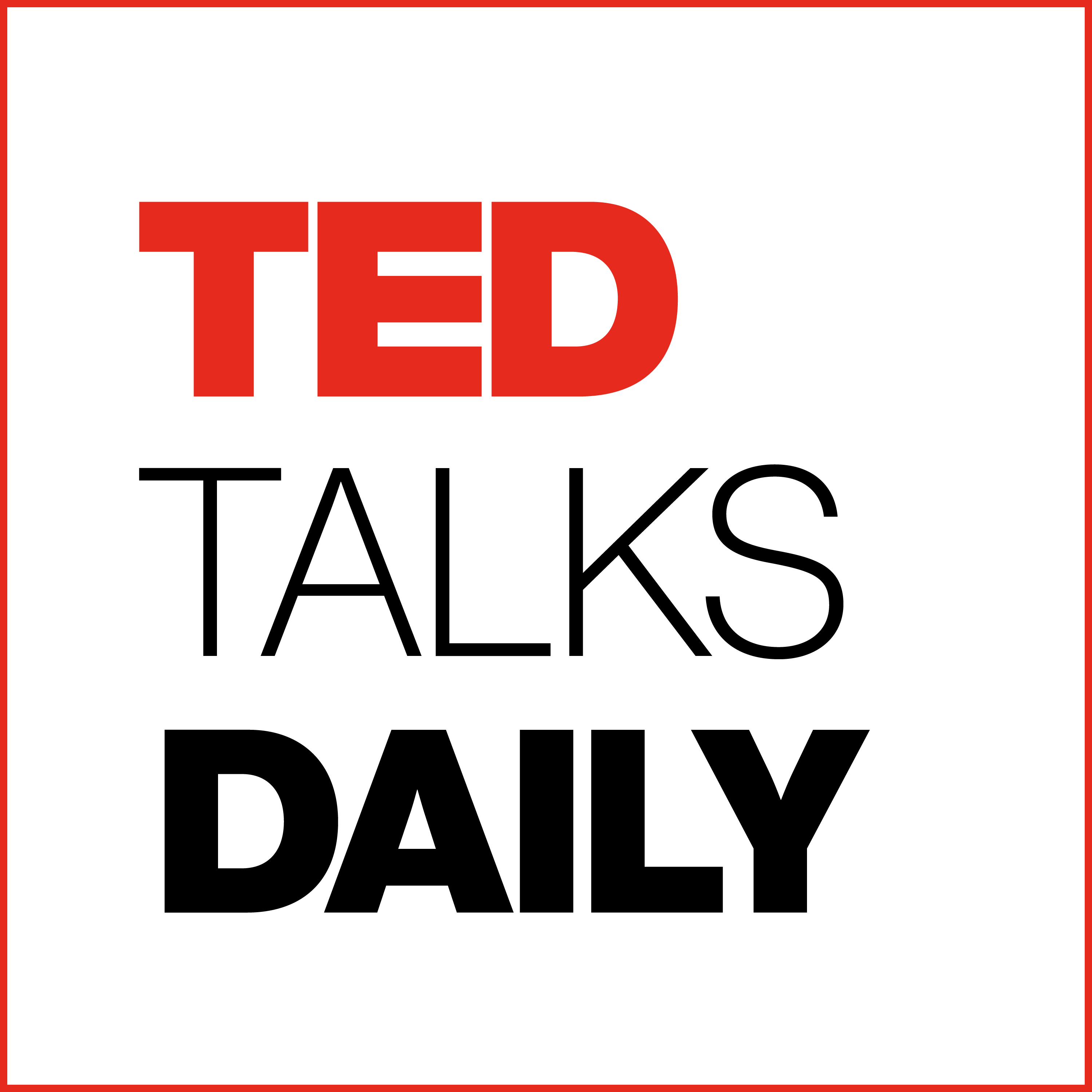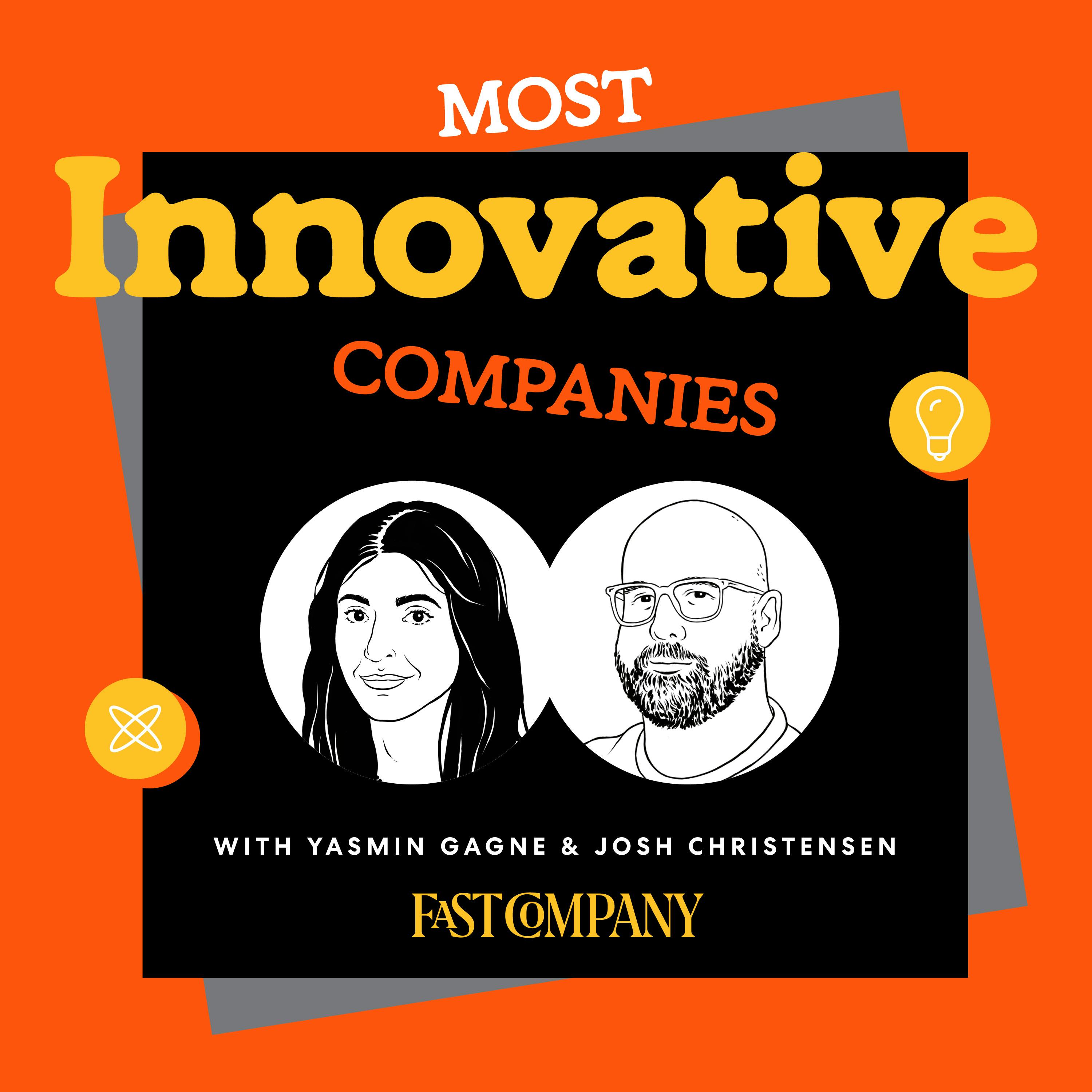
That's Life, I Swear
Every Wednesday, join Rick Barron as he unravels the intricate threads of life's most captivating stories. From heart-pounding political dramas to the awe-inspiring challenges of climate change, he explores the topics that shape our world and define our era.
But this isn't just another talk show. Rick delves deep into the human psyche, examining our beliefs, behaviors, and the obstacles we overcome. He celebrates our triumphs and embraces our imperfections, uncovering the profound lessons hidden in everyday experiences.
The episodes are a journey of self-discovery as he shares stories that mirror our collective identity. These tales aren't just entertaining – they're a reflection of who we are, who we were, and who we aspire to be. They carry the weight of our ancestral legacy, the fire of our dreams, and the depths of our pain.
With each episode, you'll confront your deepest anxieties about yourself, your place in the world, and the future that awaits us all. In understanding these complexities, you'll find inspiration, connection, and perhaps even transformation.
"That's Life, I Swear" isn't just a podcast – it's a weekly rendezvous with the extraordinary nature of ordinary life. Subscribe now, wherever you get your podcasts, and join Rick on this unforgettable exploration of the human experience. After all, that's life, I swear.
That's Life, I Swear
Tech Giants: Shaping the Future Battlefield on Ukraine Soil-Part 2
Ukraine has become the epicenter of a new era in warfare, where the future of battle is being forged today via A.I.
supporting links
1. Mykhailo Fedorov [website]
2. Alex Bornyakov [Zine]
3. Starlink [Wikipedia]
4. Clearview AI [Wikipedia]
5. Unit.City [TechUkraine]
6. Steve Blank [Wikipedia]
7. The Gordian Knot Center for National Security Innovation [Stanford]
8. Blockchain [website]
Contact That's Life, I Swear
- Visit my website: https://www.thatslifeiswear.com
- Twitter at @RedPhantom
- Bluesky at @rickbarron.bsky.social
- Email us at https://www.thatslifeiswear.com/contact/
Episode Review
- Submit on Apple Podcast
- Submit on That's Life, I Swear website
Other topics?
- Do you have topics of interest you'd like to hear for future podcasts? Please email us
Interviews
- Contact me here https://www.thatslifeiswear.com/contact/, if you wish to be a guest for a interview on a topic of interest
Listen to podcast audios
- Apple https://apple.co/3MAFxhb
- Spotify https://spoti.fi/3xCzww4
- My Website: https://bit.ly/39CE9MB
Other
- Music ...
⏱️ 14 min read
In Part One of this two-part podcast, we talked about an A.I. War Lab being established in Ukraine. In Part two we’ll be talking about the first-ever AI-driven war, unfolding right now in Ukraine. Imagine a battlefield where algorithms, data, and cutting-edge tech giants like Palantir shape the strategies and outcomes. We uncover how Ukraine has become the epicenter of a new era in warfare, where the future of battle is being forged today.
Welcome to That's Life, I Swear. This podcast is about life's happenings in this world that conjure up such words as intriguing, frightening, life-changing, inspiring, and more. I'm Rick Barron your host.
That said, here's the rest of this story
Gathering the spotlight
In the autumn of 2023, a visitor to Ukraine's capital would have encountered a stark scene. The grand boulevard leading to the governmental hub in central Kyiv bore the scars of conflict, with corroded anti-tank barriers and armed sentries guarding checkpoints along its length. The monumental edifice from the Soviet era, which serves as the headquarters for President Zelensky's administration, had its windows obscured by protective sandbags.
On the sixth level of this building, one would find the workspace of a key figure in Ukraine's wartime efforts.
Over the course of a year and a half, Mykhailo Fedorov, Ukraine’s Minister of Digital Transformation, and his team have been working around the clock, promoting Ukraine's potential on the global stage. As a former digital marketing expert, he recognized the unique opportunity presented by Ukraine's current circumstances. He viewed the nation's conflict-ridden landscapes and its adapting society as an ideal proving ground for innovative technologies. In his own words, he emphasized the important role of technological advancements in shaping Ukraine's future economic landscape.
Fedorov has regular calls with leaders at Microsoft, along with Google executives visiting Kyiv. He has been on the cover of Wired magazine and spoken about Ukraine’s tech achievements in wartime at the World Economic Forum in Davos, Switzerland. His efforts to showcase Ukraine's technological achievements during wartime had collected international attention, including features in prominent tech publications and speaking engagements at global economic forums. This marked a significant shift from the early days of the conflict, when communication took place from underground shelters with unreliable connections, and social media platforms were used to appeal to and pressure international tech firms to restrict their services in Russia.
As the conflict entered its initial phase, Ukrainian leadership found themselves inundated with a diverse array of technological assistance. Major tech corporations such as Microsoft, Amazon and Google, provided cloud and cybersecurity services, while Starlink supplied satellite communication devices. Law enforcement tools, including facial recognition software, were also made available. The military sector contributed a wide range of experimental equipment, from unmanned aerial vehicles to signal disruption systems.
In response to these tech developments, Fedorov orchestrated the formation of a digital defense force. This IT army of 400,000 volunteers, comprising hundreds of thousands of tech-savvy individuals, was tasked with safeguarding crucial infrastructure and countering cyber threats from Russian cyberattacks.
The Ukrainian authorities recognized the need for a more structured approach. They began to envision a long-term strategy that would not only address immediate wartime needs but also lay the groundwork for future economic growth.
The solution
The concept they ultimately embraced involved nurturing a robust technology sector. This initiative was designed with dual purposes: to contribute to the ongoing war effort and to establish a cornerstone of Ukraine's post-war economy. They drew inspiration from the success of other nations known for their thriving startup ecosystems, with Israel, a hotbed for tech startups, being a model to imulate.
Ukraine's substantial pool of technology professionals, many of whom had previously been employed by international firms, showed great enthusiasm for participating in the nation's defense. The government's message shifted from seeking donations to encouraging investment, viewing it as the most effective means of supporting the country's future.
In the summer of 2022, Ukrainian officials unveiled their new strategy at an international conference focused on the country's rebuilding efforts. The response from the global investment community was immediate. A group of investors from a renowned technology hub established the Blue and Yellow Heritage Fund to invest in Ukrainian startups, emphasizing that this was a business venture with anticipated high returns, not a charitable endeavor.
By 2023, the campaign had gained such traction that it presented a new challenge: managing the influx of proposals from aspiring entrepreneurs claiming to have war-winning ideas. In response, the government launched a digital platform to streamline the submission and evaluation process for defense-related innovations. This initiative attracted over a thousand proposals, with hundreds advancing to field testing. The range of submissions was diverse, including unmanned aerial vehicles, artificial intelligence applications for military communication analysis, anti-jamming communication devices, cybersecurity solutions, and equipment for clearing explosive hazards.
Palantir’s software has made it possible to aggregate dozens of previously siloed data streams to help officials clear the country of land mines. Ukraine has become the most heavily mined country in the world, with unexploded weapons, ammunition, and combat vehicles endangering more than 6 million civilians and making vast amounts of acres of farmland unusable.
The ministry works with Palantir to develop models to determine where demining efforts could have the biggest impact, helping Ukraine devise a plan to bring 80% of contaminated land back into economic use within 10 years. Additionally, the Ukraine army is utilizing Palantir’s software in its effort to prosecute alleged Russian war crimes—using its analysis of vast troves of data to link allegations of war crimes to pieces of evidence, including satellite imagery, troop movements, and open-source data like photos and videos uploaded by Ukrainians on social media.
On the outskirts of Ukraine's capital, a former industrial complex has undergone a remarkable transformation. Once a site dedicated to producing Soviet imitations of German motorcycles, this area has been reborn as a cutting-edge technology hub called Unit City. The sprawling campus, with its sleek, modern architecture, stands as a symbol of Ukraine's aspirations in the global tech arena.
High tech power brokers
This innovation center has become central to Ukraine's ambition to lead European technological advancement. Amid the conflict, it has drawn diverse visitors, from Western government representatives to prominent tech industry figures, including notable tech pioneer, Vitalik Buterin, creator of Ethereum cryptocurrency blockchain.
One of the prominent businesses located here is a Ukrainian military startup accelerator known as D3 (Dare to Defend Democracy). This accelerator has attracted over $10 million in investments from high-profile international investors, including former Google CEO Eric Schmidt. During his visits to Ukraine, Schmidt became convinced that the country's front lines would foster significant advancements in AI and drone technology. “There’s simply so much volume, so many players, and so much innovation,” Schmidt says. “It’s really impressive.”
The rapid potential of Ukraine's technology sector has begun to attract a diverse array of international investors and corporations.
Recent developments have seen several global tech firms making significant commitments to Ukraine. German manufacturer, Quantum Systems, has announced plans to establish a research facility in the capital. Perhaps most notably, a Turkish company, Baykar, manufacturer of drones has pledged a substantial investment to construct a combined research and production facility in Ukraine within the next few years.
Lessons from Ukraine’s battlefields are going global. Taiwan, citing Ukraine as a model, has enlisted commercial drone makers and aerospace firms to strengthen its military drone program amid rising tensions with China. In January of 2024, the White House hosted Palantir and other defense companies to discuss battlefield technologies used against Russia. The "battle-tested in Ukraine" stamp is proving effective.
This growing recognition of Ukraine's technological expertise represents a significant shift in the global perception of the country. From being primarily seen as a nation in conflict, Ukraine is now emerging as a key player in the international technology and defense innovation landscape. This transformation not only highlights the resilience and adaptability of Ukraine's tech sector but also positions the country as a potential leader in shaping future technological advancements in defense and beyond.
The future of A.I. in Ukraine
The broader landscape of AI-enhanced warfare remains in its early stages. Some officials express doubts about the decisive impact of these emerging technologies on the ongoing conflict in Ukraine, as this war approaches its third year.
At a recent defense industry gathering, a high-ranking official responsible for military acquisitions conveyed doubt about the contributions of the tech sector to the conflict. He asserted that, contrary to what some may claim, the current military engagements were not being significantly influenced by innovations from leading technology hubs.
This perspective highlights the complex interplay between traditional military approaches and emerging technologies in modern warfare. It also underscores the ongoing debate about the real-world effectiveness of cutting-edge tech solutions in conflict zones, despite the growing enthusiasm and investment in this sector.
The deployment of advanced technological solutions in Ukraine's conflict has sparked a complex debate surrounding the ethical implications of using invasive technologies during wartime and the extent to which privacy rights should be maintained in such circumstances. The utilization of sophisticated data analytics and facial recognition software, provided by prominent tech firms, has brought these issues to the forefront of international discourse.
The ongoing conflict in Ukraine has transformed the nation into a real-world testing ground for artificial intelligence-driven systems in warfare. This unique situation allows for rapid development and refinement of these technologies through continuous, practical application.
However, this technological revolution in warfare brings with it a significant shift in the balance of power. Traditionally, governments and their accountable institutions have been at the forefront of military innovation. In contrast, the current landscape sees private enterprises taking a leading role in developing and deploying critical technologies used in the conflict.
Steve Blank, a technology expert and co-founder of a national security innovation center at Stanford University, highlights the historical significance of this change. He points out that this is the first instance in modern warfare where the majority of key technological advancements are originating from commercial off-the-shelf products rather than government-funded research facilities.
This paradigm shift raises important questions about oversight, accountability, and the long-term implications of privatized military innovation. The emergence of a commercial marketplace for these advanced technologies suggests that the proliferation of such capabilities may be difficult to contain or regulate.
The situation in Ukraine thus serves as a harbinger of a new era in military technology, where the lines between commercial innovation and warfare are increasingly blurred. This development presents both opportunities and challenges, as the rapid advancement of AI in conflict zones could lead to unforeseen consequences in global security dynamics and the ethical use of technology in warfare.
What can we learn from this story? What's the takeaway?
A.I. development presents both opportunities and challenges, as the rapid advancement of AI in conflict zones continues. The emergence of a commercial marketplace for these advanced technologies suggests that the proliferation of such capabilities may be difficult to contain or regulate.
Well, there you go, my friends; that's life, I swear
For further information regarding the material covered in this episode, I invite you to visit my website, which you can find on Apple Podcasts, for show notes and the episode transcript.
As always, I thank you for the privilege of you listening and your interest.
Be sure to subscribe here or wherever you get your podcast so you don't miss an episode. See you soon.
Podcasts we love
Check out these other fine podcasts recommended by us, not an algorithm.

TED Talks Daily
TED
WTF with Marc Maron Podcast
Marc Maron
The Ezra Klein Show
New York Times Opinion
Hard Fork
The New York Times
Global News Podcast
BBC World Service
The Moth
The Moth
Bold Names
The Wall Street Journal
The Interview
The New York Times
The Rachel Maddow Show
Rachel Maddow, MS NOW
Most Innovative Companies
Fast Company
